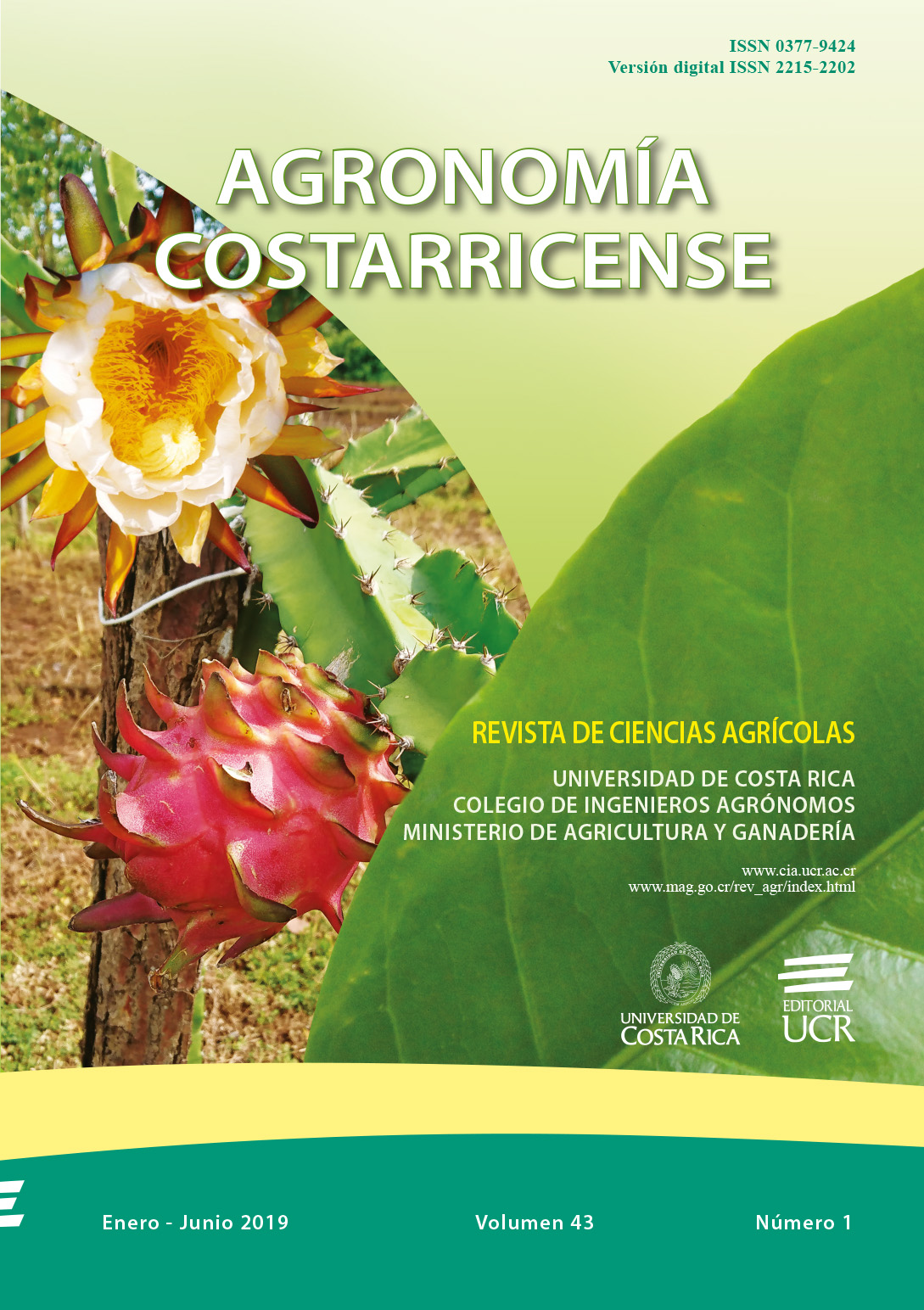Abstract
In order to develop a methodology to evaluate microorganisms capable of solubilizing phosphorus, 54 strains were isolated from a Costa Rican Andisol, and their solubilization potential was quantified under in vitro conditions. For fungi, the solubilization halo in solid medium was used as a selection criteria, and for bacteria and yeasts, pH and P in solution in liquid medium were the criteria usedfor selection. As for the in vitro manipulation, fungi showed greater stability to preserve their ability to solubilize P. Subsequently, two trials were conducted in greenhouse using Andisol soil and rice as an indicator plant. In the first trial, the best microorganisms evaluated in vitro were compared, namely Aspergillus flavus, Pseudomonas fragi, Pichia anomala and an absolute control. Plants were harvested at 100 days, the treatment with A. flavus increased dry weight of the root, but the root/stem ratio was less than 1 and the foliar P was not increased (0.13%). However, in the soil of the A. flavus treatment, population of solubilizers was increased 100-fold and soluble P rose by 2.67 mg.l-1 over the control without plants showing any benefit, probably because P in the soil solution did not increase enough due the property of Andisols to retain this element. Due to the ineffectiveness of bacteria and yeast evaluated, in the second trial, an attempt was made to increase the amount of foliar P by individually inoculating the following fungi: Aspergillus flavus, Cladosporium sp., Penicillium sp., Trichoderma longibrachiatum, together with phosphate rock (RF). With the addition of RF, the inoculated fungi increased root fresh weight up to 131%, the R/T ratio in fresh showed values higher than 1 and the foliar P concentration increased by 13% compared to the control with RF.
##plugins.facebook.comentarios##

This work is licensed under a Creative Commons Attribution-NonCommercial-NoDerivatives 4.0 International License.
Copyright (c) 2018 Agronomía Costarricense


